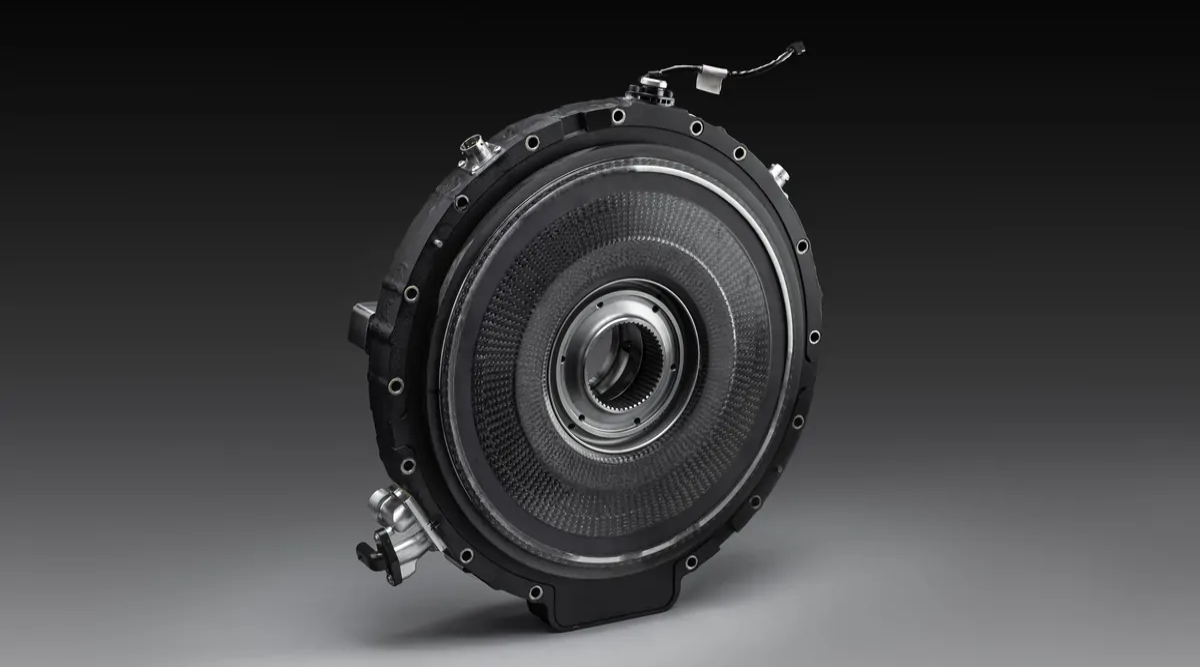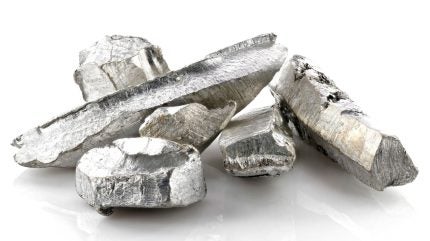Support CleanTechnica’s work through a Substack subscription or on Stripe.
Earlier this year, UK-based YASA amazed the world by showing off an axial flux electric motor that weighed just 13.1 kg (29 lb) and was rated at 550 kW (738 hp), for an energy density of 42 kW per kg. Now it is back with a new and improved version of that motor that weighs less — 12.7 kg (28 lb) — and is capable of a staggering 750 kW (1018 HP) peak power, which is surely a world record for energy density at 59 kW per kg.
So what is an axial flux motor anyway? Is it somehow related to the mythical flux capacitor in the Delorean that starred in the movie Back To The Future? No, it is not. According to Wikipedia,
“An axial flux motor is a geometry of electric motor construction where the gap between the rotor and stator — and therefore the direction of magnetic flux between the two — is aligned parallel with the axis of rotation, rather than radially as with the concentric cylindrical geometry of the more common radial flux motor.
“With axial flux geometry, torque increases with the cube of the rotor diameter, whereas in a radial flux the increase is only quadratic. Axial flux motors have a larger magnetic surface and overall surface area (for cooling) than radial flux motors for a given volume.”
How The YASA Motor Works
Three years ago, after Mercedes-Benz bought YASA, we reported that the axial flux motor is the brain child of Tim Woolmer, who came up with the idea while a Ph.D candidate at Oxford University.
“I was five weeks into my Ph.D at Oxford University, when I suddenly realized there was a much better way to build an electric machine called a torus axial-flux motor. The insight I had was that by removing the motor’s stator yoke, and splitting it into segments, we could reduce the motor’s weight — and yet at the same time improve its torque, power density, efficiency and manufacturability, making it potentially transformative within the then nascent electrification industry.”

What’s so great about an axial flux motor? Several things. It is lighter and thinner than the radial flux motors that power most electric vehicles today, yet it has up to four times the torque output. Simply put, it does more with less and is more efficient as well. The one area where it does not excel is in ultimate top speed, which is of little interest to the vast majority of motorists.
On its website, YASA explains the core advantage of an axial flux motor is that the spinning rotor has a larger diameter because it turns alongside the stator rather than inside it. Torque equates to force multiplied by radius. With an axial flux design, there’s a larger radius than in a conventional radial motor, which means more torque from a given amount of for the permanent magnets and copper windings
The YASA motor topology also removes the stator yoke, which reduces the stator iron mass by up to 80%. This innovation provides a significant power density advantage and a 5 to 10% range improvement over the traditional radial motors.
What Does YASA Mean?
YASA axial flux electric motors feature a proprietary Yokeless And Segmented Armature — that’s where the company name comes from. Its armature windings consist of separate segments ideally suited to mass manufacture with minimal application engineering. While its peak power is impressive, the company estimates that its continuous power will be in the region of 350 to 400 kW (469 to 536 hp). On its website, YASA says,
“Designed and developed at YASA’s high-tech Oxford Innovation Centre, the breakthrough represents another major validation of the company’s axial flux technology. And crucially, this isn’t a theoretical model or digital concept: it is a fully functional prototype, undergoing a rigorous development program. Compact, scalable and with no exotic materials used, it achieves exceptional performance through precision engineering, advanced thermal management and optimised packaging. This extraordinary motor design has been developed and realised with support from the Advanced Propulsion Centre, UK.”

Don’t gloss over that “no exotic materials” part of the announcement. Rare earth minerals are a hot topic today as the US and China play “my tariffs are bigger than yours.” Many electric vehicle manufacturers rely on them, but China controls about 95% of the global rare earth supply chain. Now it is threatening to vastly diminish the supply or rare earth minerals outside of China.
Simon Odling, YASA’s head of new technology, commented, “The early results are extremely encouraging. The motor’s performance on the dyno has exceeded even our most optimistic simulations. As well as its incredible peak power and overall power density, we estimate this new motor will be able to deliver all-important continuous power in the region of 350kW-400kW. This is real hardware, in real life, delivering real data — and it’s performing beautifully.”
“This record demonstrates what makes YASA unique,” added Joerg Miska, CEO of YASA. “With three times the performance density of today’s leading radial flux motors, YASA continues to redefine the boundaries of what’s possible in electric motor design — turning pure innovation into tangible engineering progress. Our technology is delivering measurable results today, while paving the way for a new generation of lightweight, efficient electric propulsion systems.”
The Mercedes Concept AMG GT XX

Earlier this year, Mercedes unveiled its C0ncept AMG GT XX, a four-passenger sports sedan that sets bold new standards for the future of automotive design, but it is more than that. It is the first concept from Mercedes powered by YASA axial flux motors — two at the rear and one at the front.
In a press statement, Mercedes said, “Axial flux motors offer many benefits — they are significantly more compact, lighter and, above all, more powerful than conventional electric motors. The power density of axial flux motors is around three times that of conventional electric motors. At the same time, the innovative motors are around two-thirds lighter and are just one third of the size.”
The two rear motors are just 3.1 inches wide while the front motor is a tad wider at 3.5 inches. “This compact motor design offers more flexibility when it comes to drivetrain packaging,” the company said. That’s an important point. Automotive engineers are just beginning to explore how battery-electric powertrains can open new design possibilities that are simply not possible with the array of engines, transmissions, and differentials needed to make a conventional car go.
Ready Right Now
YASA is quick to point out that the new motor is not some “never to be seen outside of a laboratory” experimental item, but rather “proof of what focused engineering innovation can achieve. And this isn’t a concept on a screen. It’s running, right now, on the dynos. We’ve built an electric motor that’s significantly more power-dense than anything before it — all with scalable materials and processes. This motor will bring game-changing technology to the high performance automotive sector.”
Does “high performance” mean it will only be used in high dollar vehicles? Probably, at least at first. YASA motors are being used by Ferrari and a few other manufacturers of exotic cars. But with volume comes lower prices. We may not see axial flow motors in our battery-powered Honda Civics anytime soon, but we will eventually. Just as the price of solar panels has plummeted over the past ten years, the cost of these motors will fall rapidly as well. We can’t wait!
Sign up for CleanTechnica’s Weekly Substack for Zach and Scott’s in-depth analyses and high level summaries, sign up for our daily newsletter, and follow us on Google News!
Have a tip for CleanTechnica? Want to advertise? Want to suggest a guest for our CleanTech Talk podcast? Contact us here.
Sign up for our daily newsletter for 15 new cleantech stories a day. Or sign up for our weekly one on top stories of the week if daily is too frequent.
CleanTechnica uses affiliate links. See our policy here.
CleanTechnica’s Comment Policy




